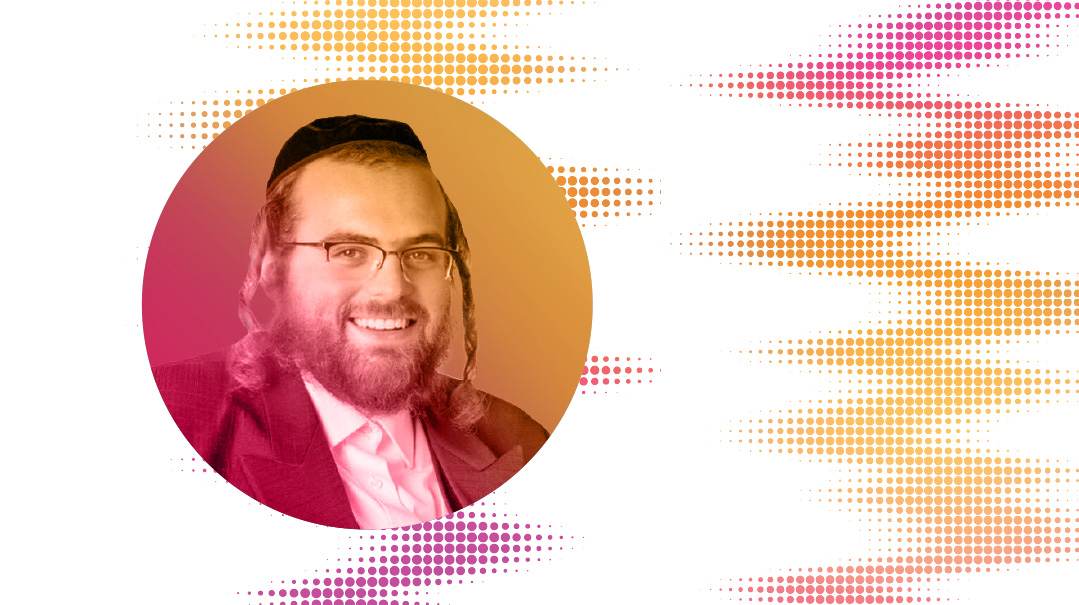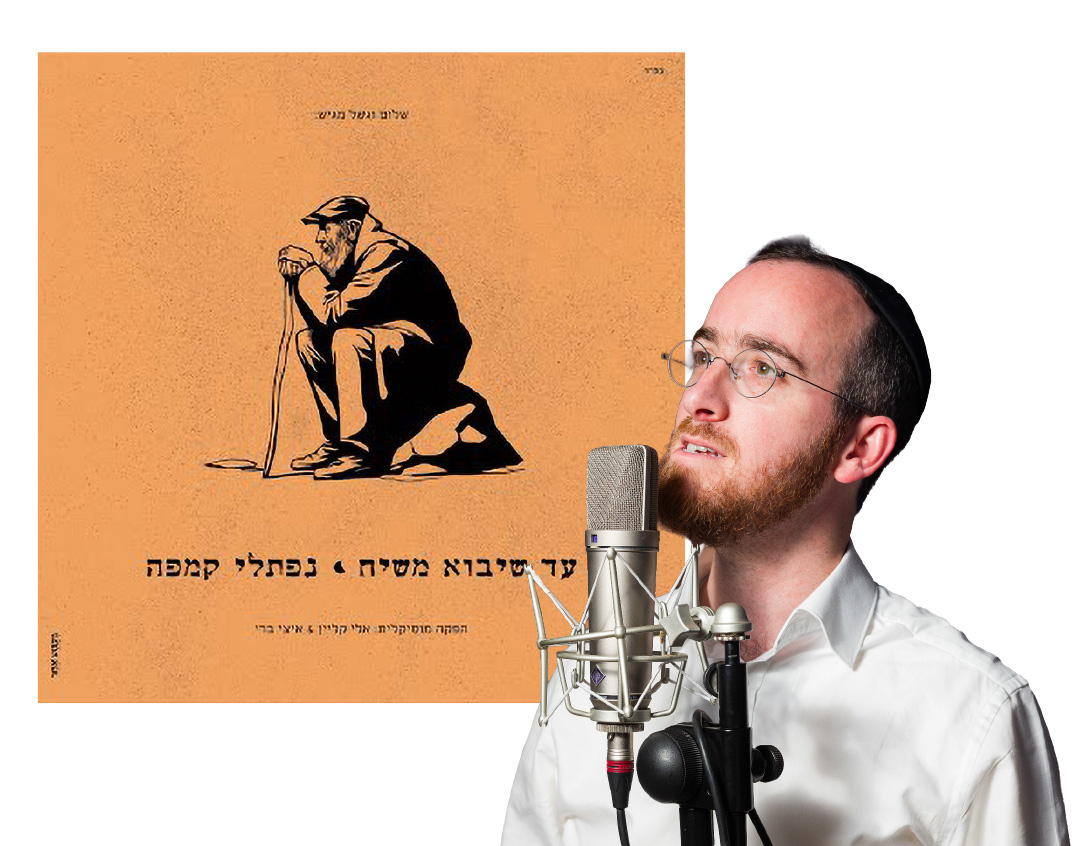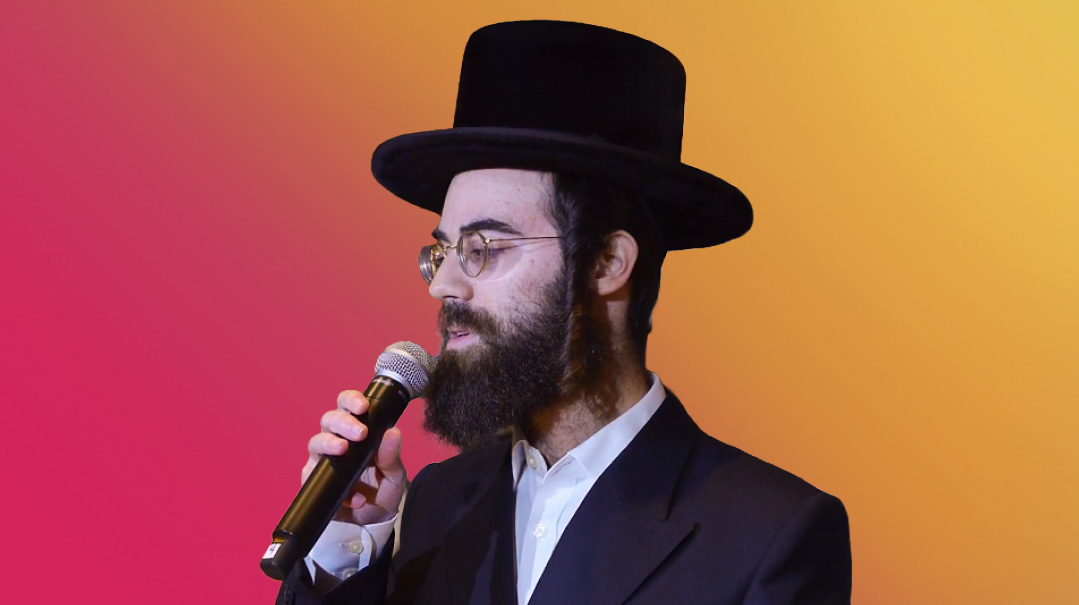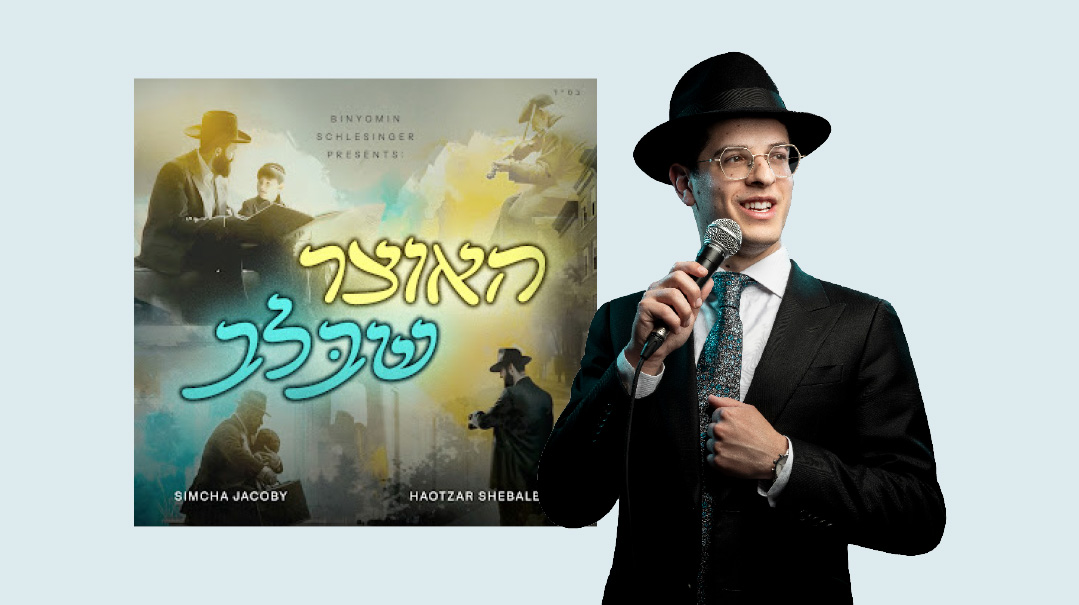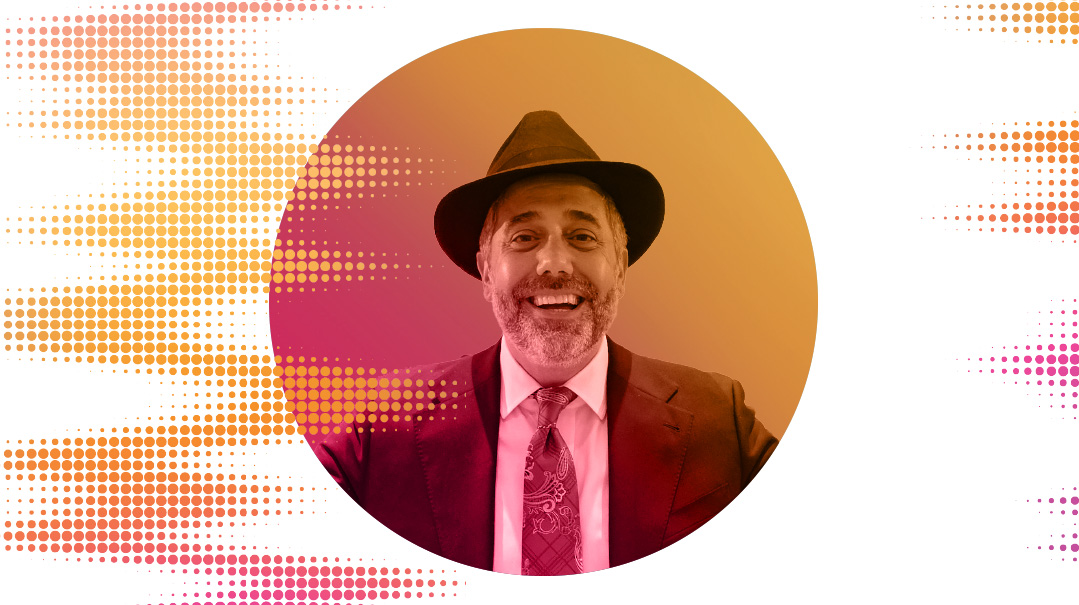Mood Mix with Chazzan Nissim Saal
| October 8, 2024His poignant single, “Va’asayem B’Tefillah,” captures the mood of a beseeching nation over the last 12 month
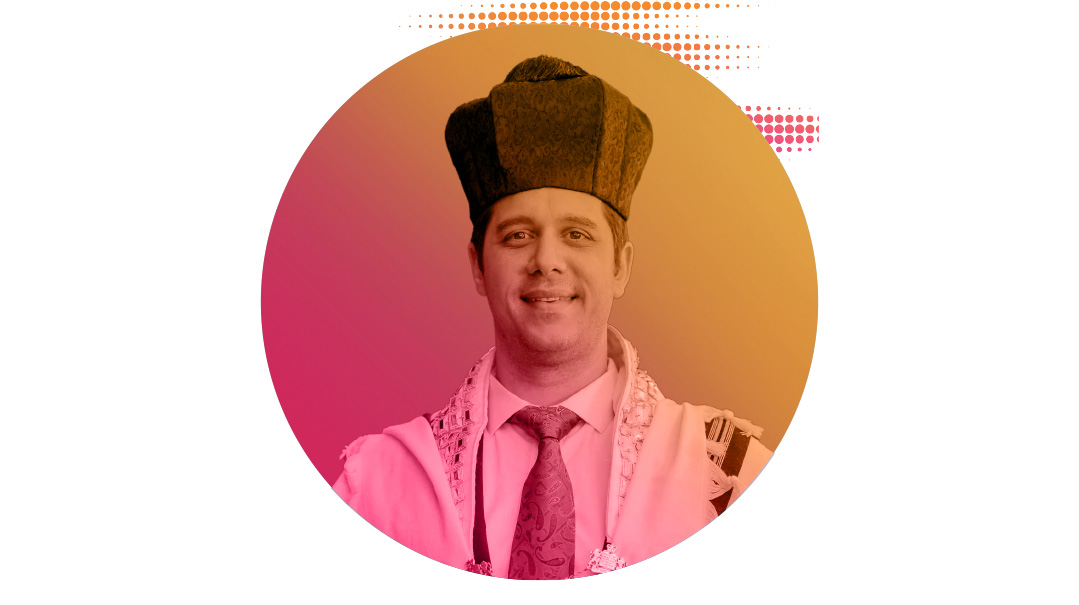
He might have missed the golden age of chazzanim by several decades, but the golden voice of CHAZZAN NISSIM SAAL makes up for the void. Chazzan Saal leads the davening as chief chazzan at the century-old Yeshurun Central Synagogue in Jerusalem, with his extraordinary vocal range. Originally from Monroe, New York, his recent album, Chazunes Collection, brings classical masterpieces up to fresh, crystal clear digital recording standards, and his poignant single, “Va’asayem B’Tefillah,” captures the mood of a beseeching nation over the last 12 months.
HOW I GET INTO TISHREI MODE
From Shabbos Mevarchin of Rosh Chodesh Elul, I use some melodies associated with the Yamim Noraim in davening. This year during Elul, I’ve been singing the niggunim of “Chamol” and “Ochilah Lakeil” on Shabbos. And I used Yossi Green’s “Ki Lo Sachpotz” on parts of Lecha Dodi, which went down very well.
HOW I REHEARSE ACROSS THE WORLD
I start after Shavuos by relistening to all my nusach recordings to refresh my memory, then I prepare some new material. After that, I have to rehearse with the shul choir, but they’re in Yerushalayim. As I live in New York, I meet with the choir leader on Zoom, and share with him the chazzanus pieces I’m planning. He selects the tunes that we’ll sing during davening, then he prepares the arrangements for the choir members. But because the choir has over a dozen members, we also need some rehearsals in person. We try to arrange those on dates when I’m in Eretz Yisrael, and then the last ones take place when I arrive for Yom Tov, a couple of days before Rosh Hashanah.
HOW THE CROWD GETS INSPIRED
They sing along with a lot of the traditional nusach. Maariv has its wordless theme, “Aha aha ah aha aha ah…” as does Mussaf, and everybody expects to join in those themes. Although we daven in the time-honored nusach, we keep things contemporary by using a variety of tunes for “Vechol Maaminim” and “Melech Elyon.” Choosing them is the job of the choir leader, and he finds tunes that the crowd knows. They might be from Chabad or from Carlebach, or something more contemporary — whatever he feels will go down well.
MY BIGGEST CHALLENGE
Aside from the physical challenge of standing for many hours and davening and singing aloud, the biggest challenge is the burden of responsibility. The kahal is looking at you and counting on you — you’re their shaliach for the tefillos which they hope will be accepted, and that is a weighty responsibility that creates a certain internal pressure — but it’s a rewarding pressure.
PARTS OF THE NUSACH I’LL NEVER CHANGE
The modes and the scales of the nusach are very important to any professional chazzan. The Ashkenazi nusach has been handed down for generations, going back to the Maharil in the 14th century. As well as major and minor modes, many sections of our Shabbos and Yom Tov tefillos are sung in “Freygish,” or simply “Ahavah Rabbah mode.” This is part of our heritage.
CHAZANIM WHO INFLUENCED ME
I started out by listening copiously to cantors Yossele Rosenblatt, Zavel Kwartin, Pierre Pinchuk, and Mordechai Hershman, all of whom composed beautiful pieces. I learned from each one their beautiful style. I think I’m more influenced by the past, the chazzanim of the golden age, although of course, as I grew into the profession, I learned and benefited from today’s chazzanim, too.
WHAT’S GOING TO BE NEW THIS YEAR
I’ll be adding three to five new pieces over Yom Tov, in addition to the new tunes from the choir master. I’m looking forward to singing “Adam Yesodo Me’afar” by Leibele Waldman for the first time.
THE MOST MOVING PART OF THE TEFILLAH
Neilah, of course, is the emotional highlight of the Yamim Noraim. You feel that the gates are closing, and you feel the need to send up the strongest prayers. We add in the Selichos with the thirteen Middos Harachamim and the moving piyut of “Shomei’a Kol Bichyos” — all of which bring us to intense emotions.
In general, when I prepare the davening, I like to find some key words and concepts that I can put a subtle emphasis on. Even while intoning the nusach, there’s a way to put a bit more emphasis on the words that have strong emotional associations.
MY ADVICE TO NEW CHAZZANIM
Work hard. Practice a lot. Learn from others. There are no shortcuts to being a good chazzan.
MY FAVORITE CHAZZANUS NIGGUN FOR KEDUSHAH
In Shacharis, I love the famous cantorial “Mimkomcha” by Chazzan Shea Weider. And in Mussaf, there’s “Shema Yisrael” by Leibele Glantz, and “Uvedivrei Kodshecha” by Moshe Koussevitzky. I find that the crowd especially enjoys the Glantz piece, but for me personally, they’re both favorites.
SOME MEMORABLE SHULS
I had a precious opportunity to daven in the iconic Beth El in Boro Park, where many great chazzanim have davened over the years. And I’m fortunate that my regular shul, the Yeshurun Central Synagogue in Jerusalem, is a beautiful and historic place.
A FAVORITE YIDDISH SONG
“A Yiddishe Mamme” gets requested a lot, along with Yossi Green’s “A Sheinem Chulem” (“Nisht Gedaiget Yidden”).
A SONG THAT TAKES ME BACK TO MY YESHIVAH DAYS
I was already listening to vintage chazzanus recordings at that point. Pinchuk’s “Raza DeShabbos” particularly stands out. Of course, we all listened to Avraham Fried’s latest CDs too. At that time, My Fellow Jew had just come out, with great songs like “S’ee Saviv Einayich,” “Eishes Chayil,” and the English song, “My Fellow Jew.”
OUR FAMILY YOM TOV TABLE
I usually stay quiet, to give the voice a bit of a rest from the pressure of the davening. But I grew up in a chassidish home, and on Shabbos we sing all the zemiros and all the tunes. We add the Sephardic Ki Eshmerah Shabbat and Dror Yikra to the song list too.
MY FAVORITE PIECE OF CHAZZANUS
There are so many, and each one has its own chein. My top few include “Omar Rabi Elazar” by Yossele Rosenblatt, “Ad Heinah,” also by Rosenblatt, “Aneinu” by Moshe Koussevitsky, “Hashem Moloch” by Yossele, and the other “Hashem Moloch” by Koussevitzky.
A PIECE THAT WILL NEVER GET OLD
Yossele’s “Omar Rabbi Elazar,” for two reasons. First, it hasn’t been overused yet, because very few chazzanim sing it. Second, it’s very exciting musically, with several different musical elements.
WHAT SURPRISES ME ABOUT THE WORLD OF CHAZZANUS
I’m surprised all over again each time young people come over after shul or after chazzanus events to discuss their affinity for chazzanus. In my experience, chazzanus has fans of all ages.
(Originally featured in Mishpacha, Issue 1032)
Oops! We could not locate your form.

